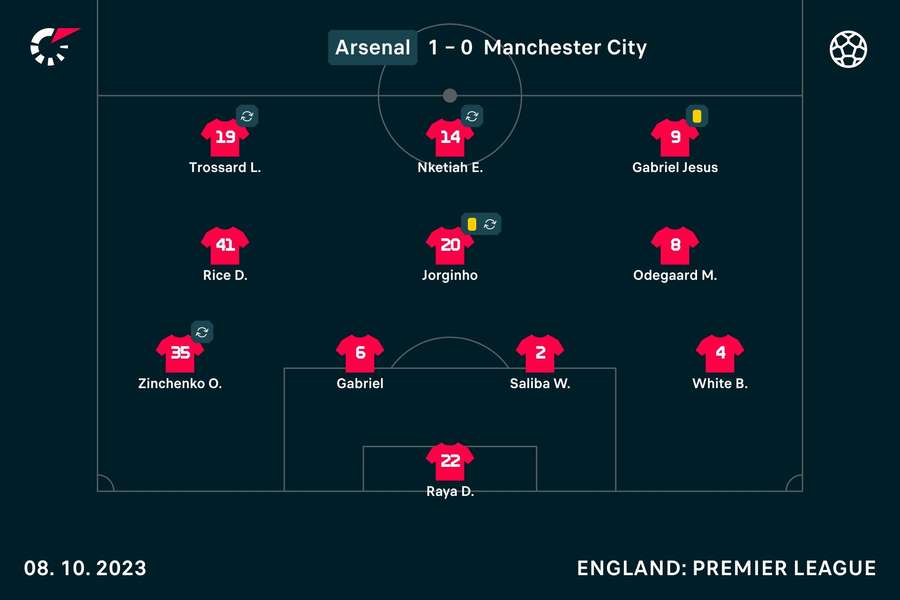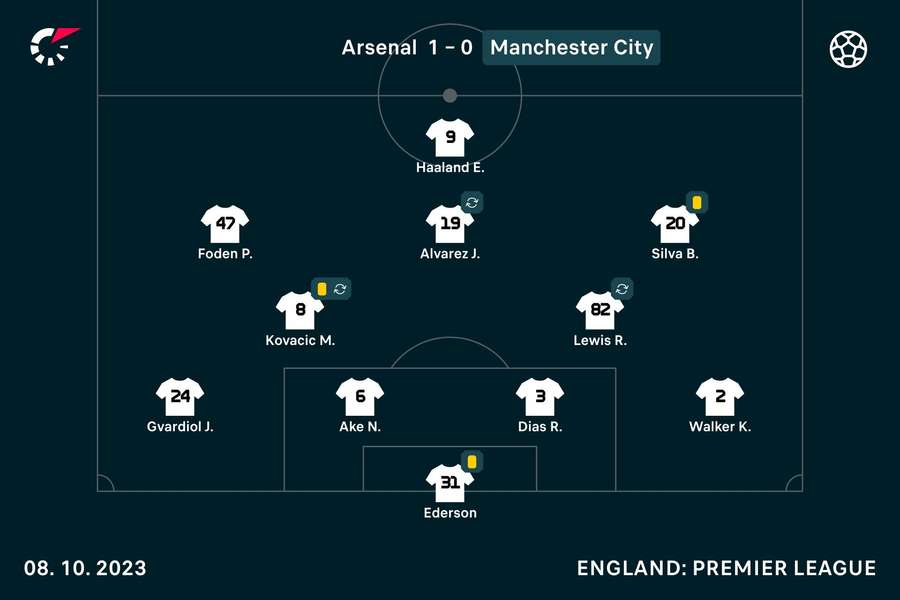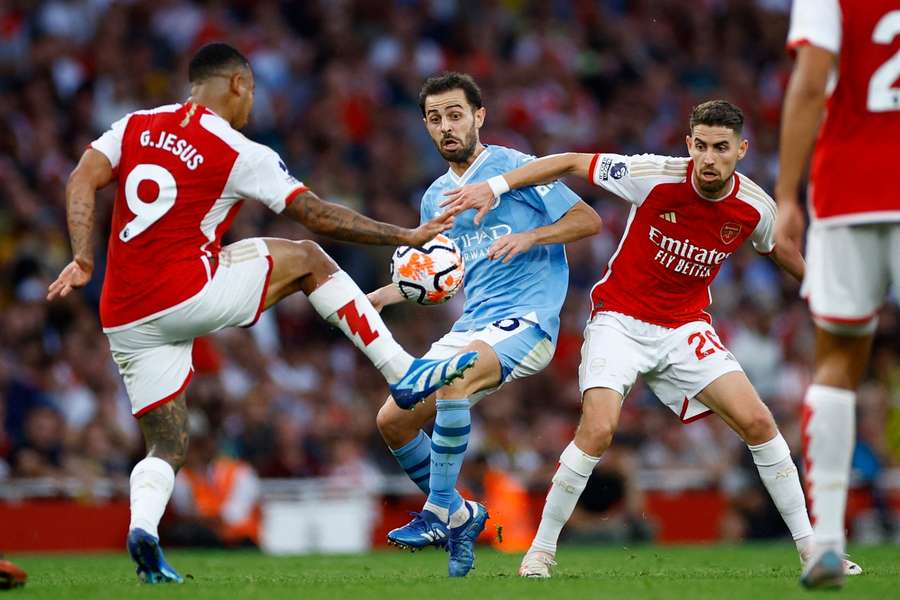In a very cagey affair at the Emirates, Arsenal managed to prevail, beating City with a late goal from Gabriel Martinelli - a deflected strike from the edge of the box.
But the game looked to be petering out to a stalemate for most of the evening, and in this tactical review, we're going to discuss what both teams did to nullify the other, and why this game played out the way it did.
Arsenal's narrow defensive shape and tactical build-up change

Arsenal looked to defend narrow by bringing their wingers (Gabriel Jesus and Leandro Trossard) in-field to block the central passing lanes into the City forwards. This created a narrow 4-5-1 out of possession, with the main aim of forcing City into wide areas.
The Gunners were looking to overload the central areas and make it hard for City to make fast interchanges in central zones - they wanted City to play the ball into wide areas where Arsenal could use the byline as an extra defender and push the visitors into less dangerous areas to then pressure them.
This was Mikel Arteta's plan to trap City, by setting pressing patterns for them to go into wide areas where Arsenal could then press them to recover the ball without leaving themselves open in central areas. It was a cautious approach to keep things tight whilst still recovering the ball and creating counter-attacks when possible.
Another tactical change Arsenal made was their decision to build up in a 4-2 structure, keeping their full-backs wide and having a double pivot midfield, as opposed to their usual structure of 3-2 in the build-up with Oleksandr Zinchenko as an inverted full-back.
This again came down to the cagey approach of Arsenal for this game, and risk management. In the 3-2 build-up, Zinchenko inverts and is therefore leaving his left back area unattended. This means when the ball is turned over, there is a big gap in that left channel to attack, and this leaves Arsenal in scramble mode defensively.
By building in a 4-2, it means the players are occupying their natural positions on the pitch, and if the ball turns over they are in their defensive set-up already, giving more stability to defend in transition.
Man City's central focus and forcing of long balls

Despite the space Arsenal were giving City in wide areas, Pep Guardiola's side seemed determined to play narrow and centrally, with the likes of Phil Foden and Julian Alvarez playing extremely close to Erling Haaland.
City wanted to play through central zones using Bernardo Silva, Rico Lewis and Mateo Kovacic to try and progress the ball into the narrow trio of Phil Foden, Erling Haaland and Julian Alvarez. However, this was not working, and saw City's main attacking threat become Josko Gvardiol overlapping on the left-hand side.
This created a fair few chances, but with Gvardiol being a central defender playing at left-back in Pep's system, his final ball wasn't the best on those occasions. Still though, City persisted to play this way and only made the change to bring a direct winger in the shape of Jeremy Doku on in the 70th minute.
The away team were even looking to press high up in a narrow shape, with Lewis and Kovacic pushing beyond Bernardo Silva to attach themselves to the double pivot of Declan Rice and Jorginho.
Lewis and Kovacic pressed really high up, stopping the two pivot players from receiving the ball and turning in midfield. Instead, City looked to force Arsenal to go long and win their duels that way to regain possession. This worked well throughout the game as a defensive strategy, but one long ball they couldn't win at the end undid all the defensive hard work, when Havertz knocked the ball down for Martinelli to fire home.
Conclusion
In conclusion, both teams set up with narrow and cagey approaches to counteract the other. Throughout the game, both teams struggled in their attacking passages of play and stuck to their defensive strategies to make life hard for the other.
The game was decided by one moment, which will massively benefit Arsenal going forward, showing their ability to win a game that looked to be fading away, the hallmark of true title winners.


